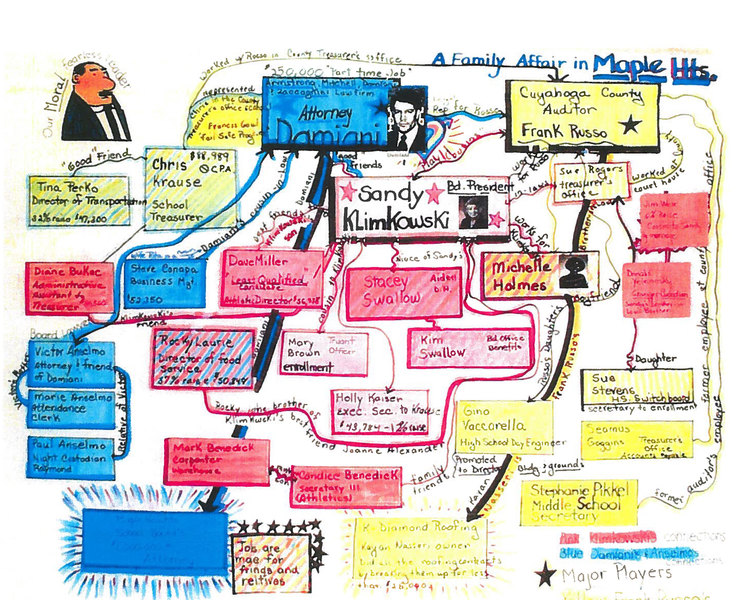What is power mapping and why is it important?
Power mapping involves identifying the people and organizations that can influence the outcome you're advocating for. It's a visual tool that draws connections between the influential players. Creating a power map is an important getting-started activity in advocacy because it helps you figure out who to directly approach in your campaign. You can use this tactic to apply pressure towards an advocacy goal, articulate the top decision-makers for a policy proposal, or simply visualize the relevant players and organizations in your local community. This critical exercise will strengthen and inform your work and set you up to build power and win.
Power mapping also has a history of being used in less political contexts. For example, academic and activist Kai Anderson has used hand-drawn thematic maps to illustrate conservation of land. Through analysis, they can show how land can be protected, where power intersects in the landscape, and which allies and opponents might crop up. At first glance, these maps can be interpreted as visually appealing, without much tactical direction. However, at a deeper look, these maps embody strategy and tactics with the end goal of preserving and protecting wilderness areas.
For more information on what power mapping is, check out this fantastic resource by Beautiful Trouble.
When to use a power map
A power map works best when a campaign or organization has
- Established a clear goal: something concrete and specific (e.g., have your local Council adopt a smoke-free outdoor areas policy)
- Identified the people who can actually make your goal happen for you i.e., the decision-maker
- Looked at the broader social, political and economic environment that impacts the issue and goal
Example Scenarios:
- Connecting local businesses with corporate donations
- Identifying politicians' donors to add pressure to pass issue based legislation
- Illustrating progress or lack of progress on environmental pledges
- Narrative/visual representation of political/geographic boundaries
- Understanding a school district based on neighborhood demographics
- Local organizations wanting to understand underserved communities' needs and and where best to allocate funding priorities or policy advocacy
How to make a power map
We'll collect existing resources on how to make power maps here. Please comment below if you have any additional resources or experiences to share!
- Power Mapping methodology from Beautiful Trouble: an excellent resource that describes what power mapping is and gives step-by-step instructions on how to do it.
- Power Mapping Your Way to Success: from the Union of Concerned Scientists.
- A Guide to Power Mapping and Analysis: this exercise will guide your team through a power mapping analysis to inform your campaign strategy with a thorough picture of the players, and their power.
- Little Sis: step by step instructions for power mapping corporations or other organizations
Examples of power maps
- LittleSis: this watchdog network enables users to create their own online power maps and features example power maps here.
- Power Mapping Your Way to Success: this guide from the Union of Concerned Scientists gives some general examples of different kinds of power maps on pg. 3.
- The above referenced interview on Mapping Power and Strategy for Conservation Victories with Kai Anderson

Image Credit: https://www.ohea.org/power-mapping-scouting-your-pathway-to-success/
Next Steps
What examples of power maps have you seen? What campaigns or policy goals did this exercise spark? Are there industries near you that you could examine with a power map? What might you build a power map as an advocacy tool moving forward? Which of these examples was most exciting to see visually?

1 Comments
Absolutely love this! Can't wait to read more 😃
Reply to this comment...
Log in to comment
Login to comment.